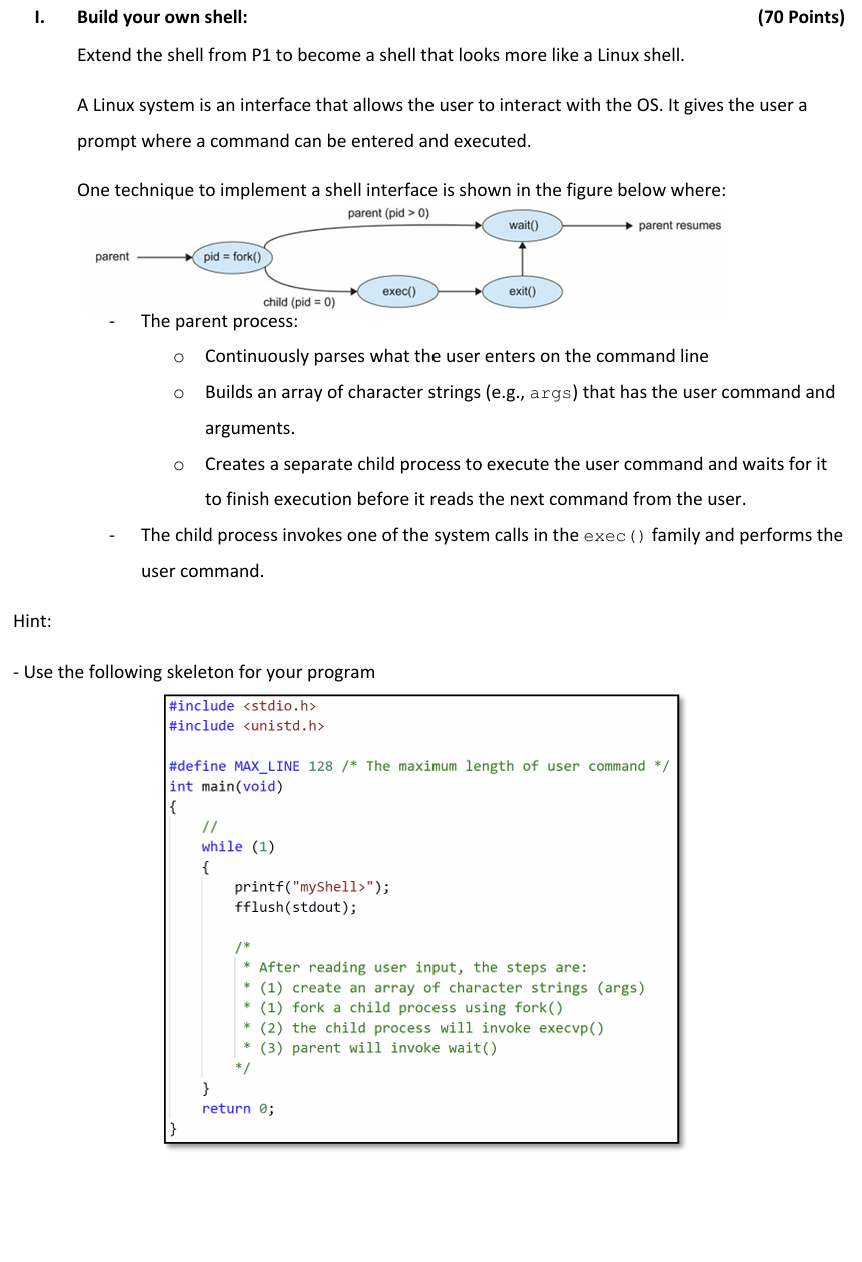(Solved): I. Build your own shell: Extend the shell from P1 to become a shell that looks more like a Linux she ...
I. Build your own shell: Extend the shell from P1 to become a shell that looks more like a Linux shell. A Linux system is an interface that allows the user to interact with the OS. It gives the user a prompt where a command can be entered and executed. One technique to implement a shell interface is shown in the figure below where: Continuously parses what the user enters on the command line Builds an array of character strings (e.g., args) that has the user command and arguments. Creates a separate child process to execute the user command and waits for it to finish execution before it reads the next command from the user. The child process invokes one of the system calls in the exec () family and performs the user command. Hint: Use the following skeleton for your program #include #include #define MAX_LINE 128 /* The maximum length of user command */ int main(void) { // while (1) { printf("myShell>"); fflush(stdout); /* After reading user input, the steps are: (1) create an array of character strings (args) (1) fork a child process using fork() (2) the child process will invoke execvp() (3) parent will invoke wait() */ } return 0; }Example of the array of character strings (argv) the parent process will build before it invokes fork() myShell> ps -ael args[0] = "ps" args[1] = "-ael" args[2] = NULL Extend your own shell to support one level of pipeline where the output of first command is passed as input for the second command using the pipe (|) operator. (30 Points) Below is an example of the array of character strings (argv) the parent process will build before it invokes fork(). myShell> ls -l | grep ".txt" args[0] = "ls" args[1] = "-l" args[2] = "|" args[3] = "grep" args[4] = ".txt" Both the ls and grep commands will run as separate processes and communicate using the UNIX pipe() function described in Section 3.7.4. Perhaps the easiest way to create these separate processes is to have the parent process create the child process (which will execute ls −l). This child will also create another child process (which will execute grep “.txt”) and establish a pipe between itself and the child process it creates. Implementing pipe functionality will also require using the dup2() function, as described in the above section.
